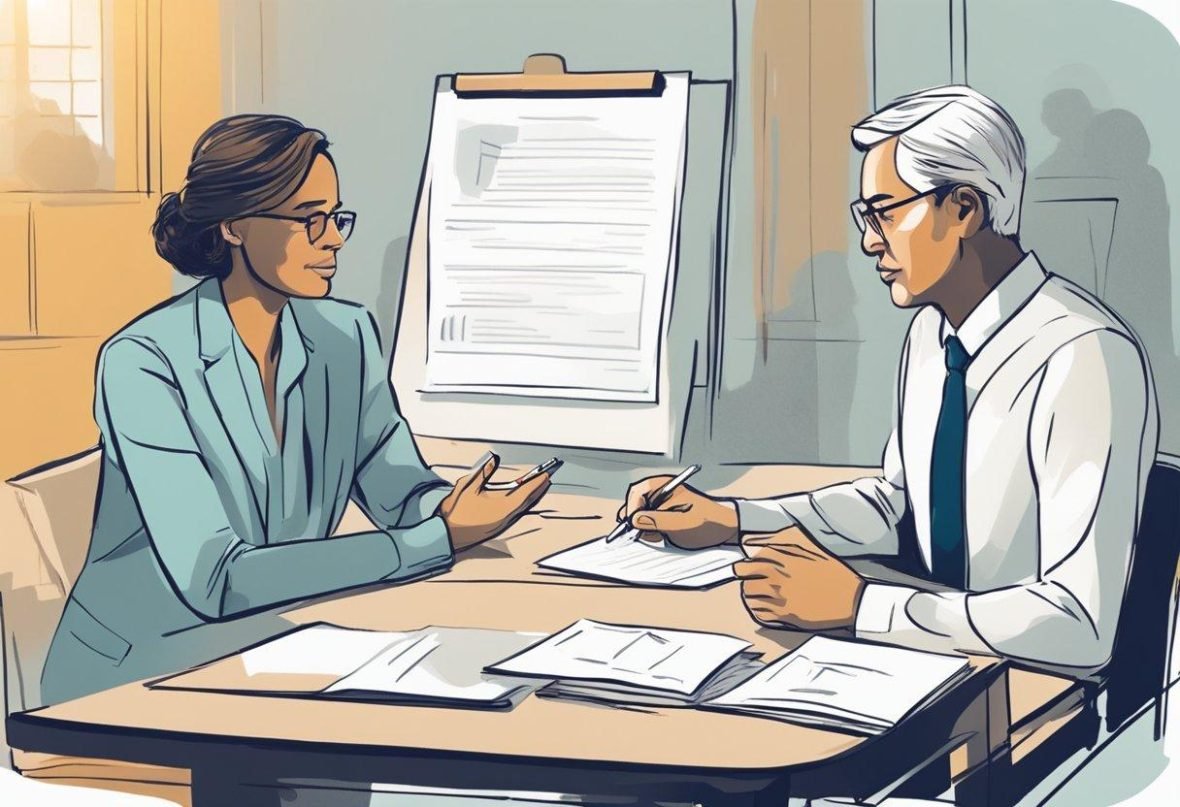When someone experiences a particular injury, the path to resolution does not always lead straight to a courtroom trial. Frequently, individualities find themselves in a particular injury agreement, a form of alternative disagreement resolution (ADR) that aims to settle controversies without the formality, stress, and implicit costs of action. In agreement, a professional third party — the middleman — helps the disagreeing parties negotiate a mutually respectful agreement. This process offers a space where both sides can communicate openly, eased by a middleman who guides the discussion to help reach an agreement.
Injury agreement generally unfolds in a more relaxed terrain, down from the inimical atmosphere of a courtroom. The informal setting contributes to a conversational tone, making it conducive for each party to express their shoes and enterprises. The middleman does not give a list decision but rather works to help the involved parties to find common ground and agree on the terms of agreement. Having professional accident lawyers not only saves time but frequently leads to results that are acclimatized to the specific requirements and interests of those involved.
The middleman’s part isn’t to serve as a judge but to encourage a formative dialogue between the parties. They help in clarifying issues, relating interests, and exploring the viability of implicit results. Since the process is voluntary, both sides retain control over the outgrowth, which can significantly increase the chances of a resolution that’s more satisfying to everyone involved. A particular injury agreement therefore stands as an effective volition to the court, offering a warmer, more individualized approach to resolving legal controversies.
Understanding Personal Injury Mediation
Personal injury agreement is a less formal pathway toward resolution where a neutral third party assists both sides in reaching an agreement. It’s often a step before heading to court—a space for dialogue and understanding.
The Basics of Mediation
Agreement is a voluntary, indispensable disagreement resolution system that is designed to be nonpublic and less inimical than a court trial. It hinges on the amenability of all parties to come together to negotiate an outgrowth. In particular injury cases, it generally involves the person who has suffered an injury and the party responsible for the injuries, which could be another individual or a reality.
During the process, both sides present their case, share information and substantiation, and work collaboratively to resolve the disagreement. It can be initiated by the debaters or occasionally is obligatory before a case goes to trial.
The Role of the Mediator
The middleman acts as the facilitator of these accommodations. They aren’t there to make opinions or judgments but to guide the parties toward a mutually respectful agreement. This neutral third party is typically experienced in personal injury law and conflict resolution. Their role includes:
- Ensuring a balanced exchange of views,
- Maintaining the confidentiality of the discussions,
- Helping clarify the interests and priorities of each party,
- Identifying possible areas of agreement, and
- Suggesting settlement options.
The mediator’s objective is to defuse the situation and help both sides find common ground, potentially saving everyone time and resources if the case were to go to a formal trial.
The Mediation Process
The mediation process in a particular injury case is aimed at changing a mutually respectful agreement through structured accommodations. It’s nonpublic, frequently voluntary, and can give checks without the need for a trial.
Pre-Mediation Preparations
Before the actual agreement session, both parties along with their legal representatives prepare by gathering all applicable documents, formulating their arguments, and deciding on possible agreement conditions. Parties should agree on who’ll intervene in the case, frequently a professional with legal moxie, and commit to the confidentiality of the process.
Opening Statements
The agreement begins with an opening statement from the middleman who explains the rules and objects of the session. Also, each party has the chance to present their perspective without interruptions. This helps set a collaborative tone and gives everyone a clear understanding of the disputes at hand.
Negotiation and Communication
In this critical phase, parties discuss their issues and interests. Communication is key here and is facilitated by the mediator, who helps guide the negotiation. The goal is to explore potential compromises and find common ground. All discussions are confidential, which fosters open and honest dialogue.
Closing the Mediation
If parties reach an agreement, the mediator will typically help draft a settlement to outline the terms. If no agreement is reached, the mediator may propose next steps or the case may proceed to trial. The closure of the mediation session provides a clear path forward, whether it leads to a settlement or to further legal action.
Preparing for Mediation
In gearing up for the mediation process, it’s integral for one to strictly gather material information, comprehend all implicit pitfalls and sins, and easily lay out a docket. This preparation is critical for a successful mediation session.
Gathering Information
They should start by collecting all applicable documents that support their particular injury case. This could include medical records, accident reports, substantiation statements, and any other substantiation that corroborates their claim. Indeed more, it’s salutary to produce a comprehensive timeline of events and a list of incurred charges associated with the injury.
Key documents to gather:
- Medical reports and bills
- Police or accident reports
- Photographs of the injury and accident scene
- Repair bills (if property was damaged)
- Employment records, if claiming lost wages
Understanding Risks and Weaknesses
Next, individualities ought to have a candid discussion with their attorney to identify and understand the implicit pitfalls and sins within their case. This discussion should include an assessment of the strengths and sins of the substantiation, possible defenses the other side may use, and any legal or factual hurdles they might face. Feting these rudiments helps frame realistic prospects for the agreement outgrowth.
Questions to consider with the attorney:
- What defense strategies might the other party use?
- Are there any inconsistencies in witness testimonies or evidence?
- How might comparative negligence laws affect the case?
Setting the Agenda
Lastly, setting an agenda helps to organize the process. They, together with their attorney, should determine the major points of discussion and the primary objectives for the mediation. The agenda can include a list of priorities, target settlement figures, and any non-monetary terms that they consider important. Crafting questions in advance can also steer the conversation towards productive dialogue.
Sample agenda outlines:
- Opening statements
- Overview of evidence
- Discussion of key issues
- Exploration of settlement options
- Terms of agreement
Those embarking on personal injury mediation will find that thorough preparation boosts confidence and can lead to a more favorable resolve. From compiling evidence to strategizing with legal counsel, every step is key to steering the mediation towards a successful conclusion.
Conclusion: Outcomes and Aftermath
The culmination of personal injury mediation hinges on whether parties reach a mutually agreeable solution and how they follow through post-mediation.

Reaching an Agreement
In personal injury mediation, the outcome is often a settlement agreement. This is a voluntary compromise where both parties find a satisfactory solution to avoid a court trial. Not every mediation results in settlement, but the success rate is notable—many end with both sides agreeing on a fair resolution.
Post-Mediation Considerations
Once parties reach an agreement, they should carefully review the terms. A finalized settlement typically spells out compensation details and any actions required by either party. It’s crucial for everyone to understand their post-mediation obligations to ensure that the outcome of the mediation stands and that all terms are met accordingly.


